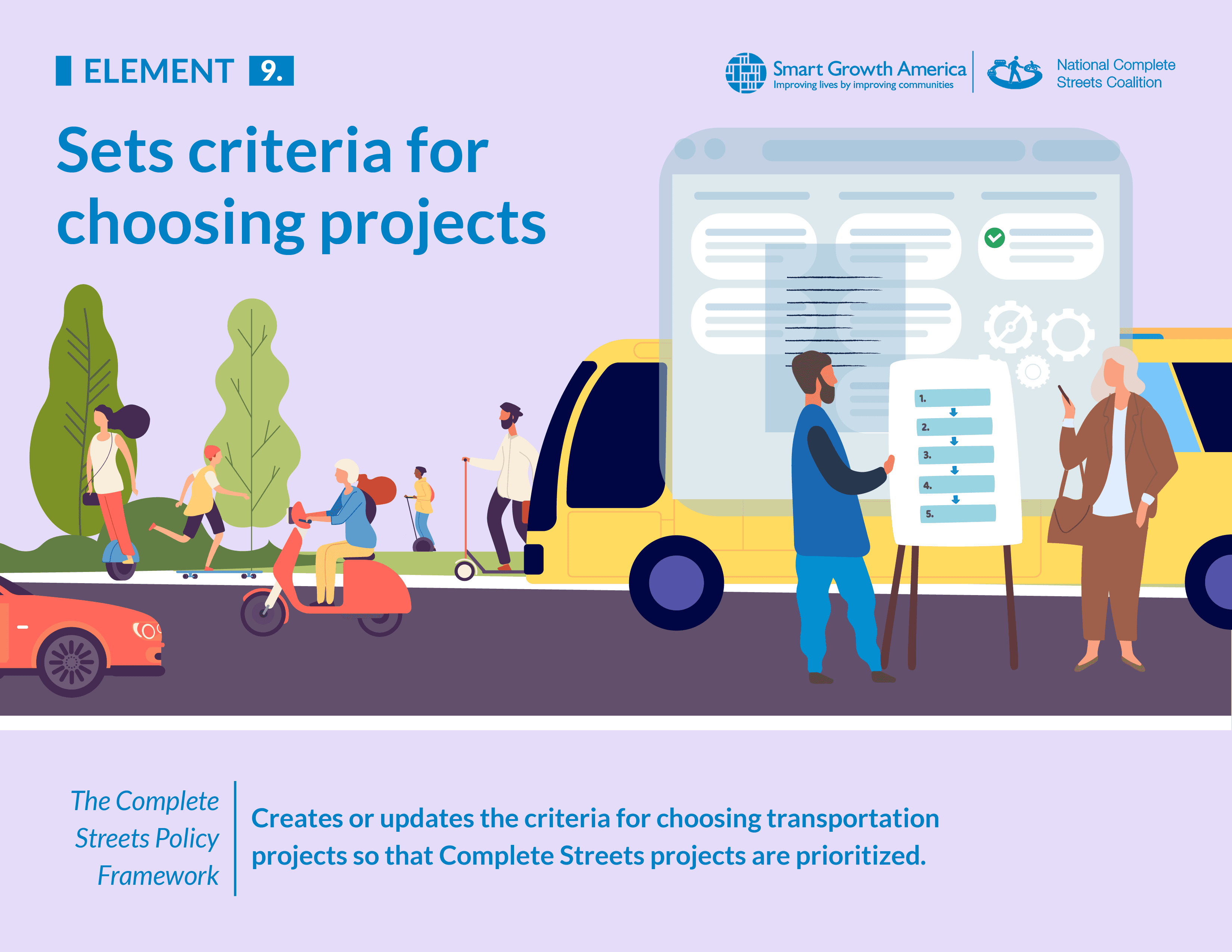
News
By Steve Davis, April 24, 2023
Every local community, region, and state has a process by which they choose which transportation projects to fund and build. A strong Complete Streets policy changes that process by adding new or updated criteria that give extra weight to projects that advance Complete Streets and improve the network.

Why is this element integral to a strong Complete Streets policy?
A Complete Streets policy that results in the same old road projects being built is just a paper tiger. A strong and effective Complete Streets policy starts to reshape the process by which projects are chosen for funding and advancement.
At every level of government—state, metro, and local—there is some sort of prescribed process in place for selecting transportation projects for funding and construction. The strongest policies clearly define new or updated criteria for that process to ensure that Complete Streets projects get prioritized to advance.
It’s also often true that the existing, conventional process for choosing projects prioritizes the needs of people who are driving rather than all people within a community. There’s a heavy focus on criteria that prioritize vehicle level of service (how many cars can be moved through a corridor), or account for potential impacts to vehicle travel time, while ignoring the more holistic impacts of improving access to jobs and services.
What does this element look like in practice?
This is often the part of the transportation planning process that is the most opaque for the public: How projects are selected.
In some places, such as with the Virginia’s Smart Scale program, projects are measured quantitatively against a range of predetermined criteria and the highest-scoring projects receive funding. This is far more transparent than Virginia’s previous process. In other states or cities, this process is much more of a black box, and residents may have far less confidence that anything other than politics or influence is shaping which projects move forward. A strong Complete Streets policy both opens up this black box and institutes criteria that prioritize projects that will advance the community’s goals (see element #1) within their Complete Streets policy, such as improving active transportation options, completing a network of Complete Streets, targeting underserved communities, and reducing health, safety, and economic disparities.
If the process for choosing transportation projects is unchanged by the Complete Streets policy, then that policy will fail to be fully implemented.
Policy scoring details
Three clear changes are the goal for this element. First, modifying the jurisdiction’s project selection criteria. Second, establishing clear and specific criteria that will prioritize Complete Streets projects and create better multimodal network connectivity for all users. And third, embedding equity considerations in those criteria by targeting underserved communities and/or alleviating disparities in health, safety, economic benefit, and access to destinations.
In our framework for evaluating and scoring Complete Streets policies, this element is worth a total of 8 out of 100 possible points.
- 5 points: Policy establishes specific criteria to encourage funding prioritization for Complete Streets implementation.
- (1 point) Policy mentions revising project selection criteria to encourage Complete Streets implementation.
- (0 points) No mention.
- 3 points: Policy specifically addresses how equity will be embedded in project selection criteria.
- (0 points) No mention.
Related News

© 2025 Smart Growth America. All rights reserved
Site By3Lane Marketing


























